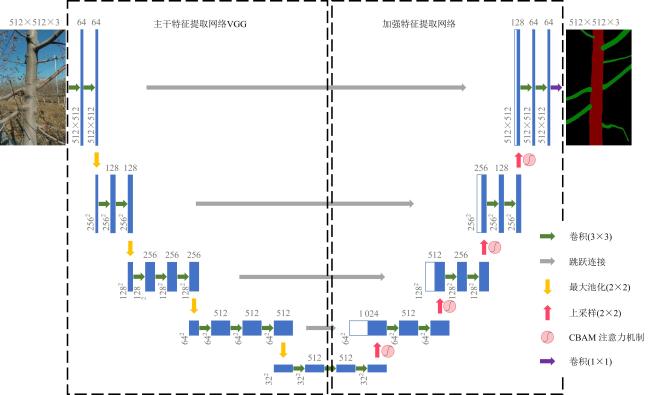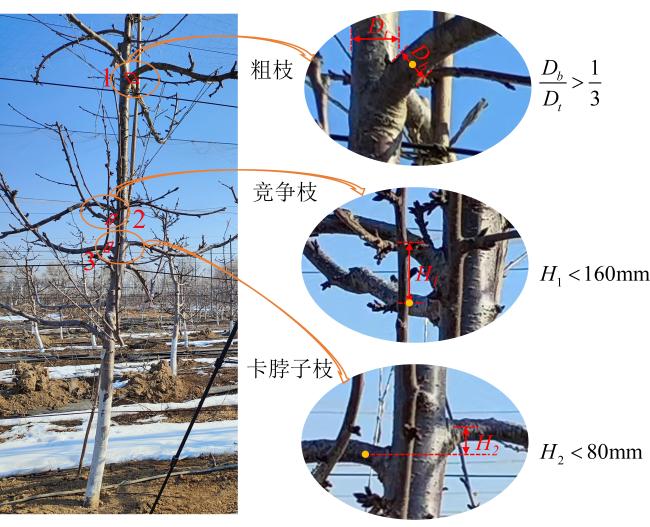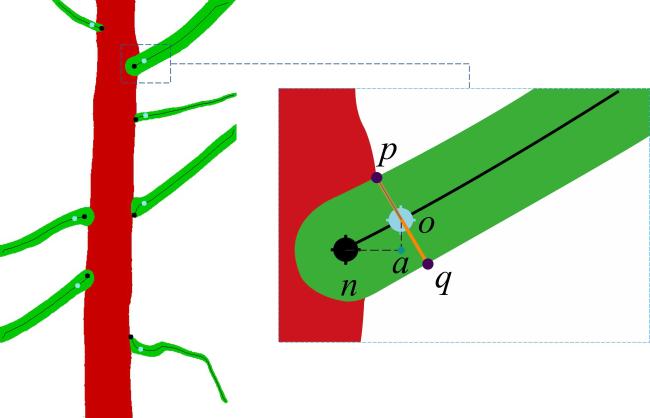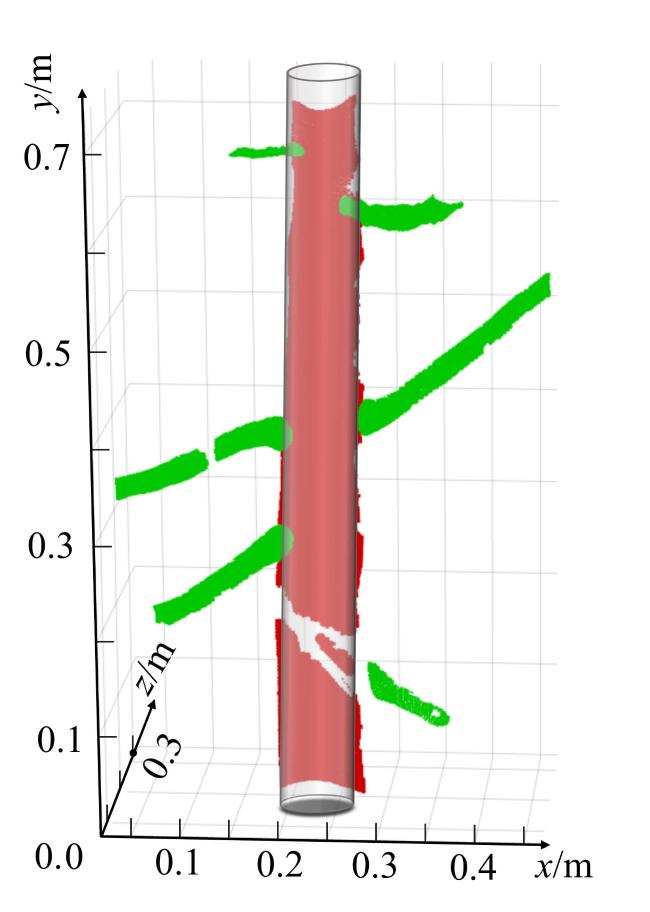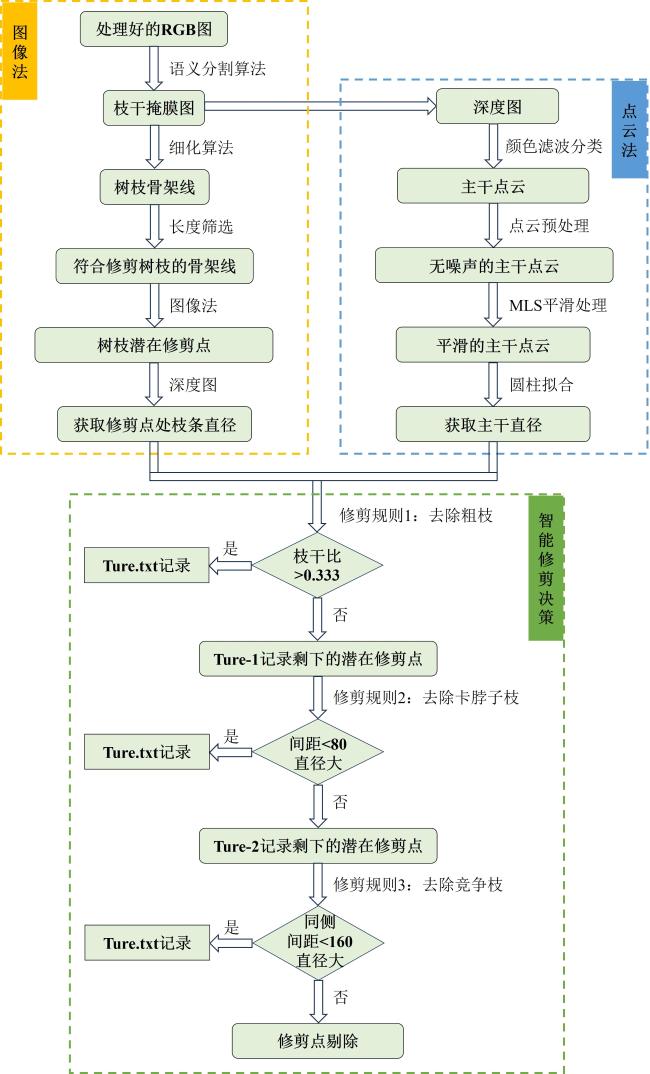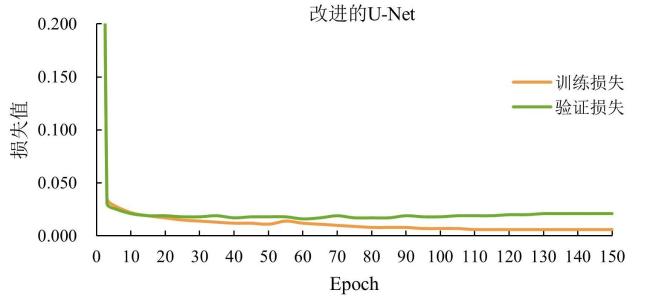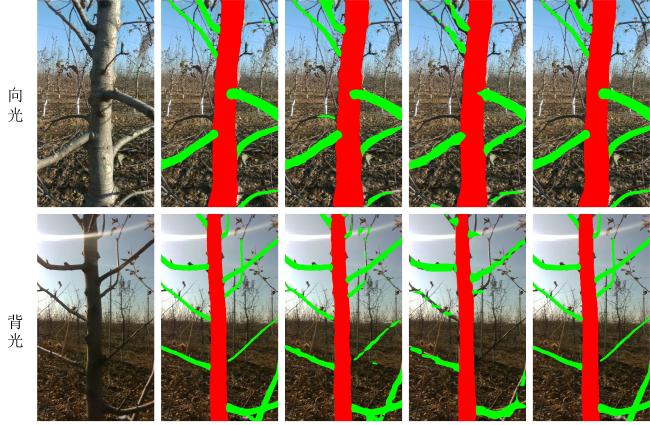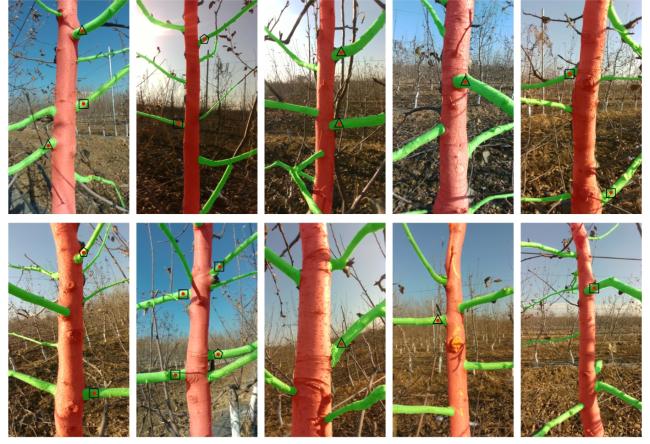0 引 言
1 材料与方法
1.1 数据采集与预处理
1.2 U-Net模型改进
表1 改进U-Net模型的训练主要参数Table 1 Improved U-Net model training main parameters |
| 参数名称 | 参数值 |
|---|---|
| 冻结epoch | 50 |
| 冻结步长 | 4 |
| 解冻epoch | 100 |
| 解冻步长 | 2 |
| 学习率 | 0.000 1 |
| 下采样倍速 | 16 |
| 学习率衰减类型 | Cos |
1.3 修剪点定位
1.3.1 潜在修剪点定位
1.3.2 直径和间距估计
1.3.3 修剪点的最终获取
1.4 评价指标
2 结果与分析
2.1 改进U-Net模型
表2 苹果树枝干分割研究4种模型的语义分割结果Table 2 Semantic segmentation results of four models for apple tree branch segmentation |
| 模型 | 特征提取网络 | mIoU/% | mPA/% | Precision/% |
|---|---|---|---|---|
| DeeplabV3+ | MobileNet V2 | 86.67 | 93.04 | 92.02 |
| Xception | 85.92 | 91.69 | 92.41 | |
| PSPNet | MobileNet V2 | 74.93 | 81.83 | 87.19 |
| Resnet50 | 79.89 | 85.98 | 90.19 | |
| U-Net | 未替换 | 88.46 | 92.78 | 93.14 |
| VGG16 | 91.50 | 94.30 | 95.58 | |
| Resnet50 | 90.10 | 93.46 | 94.77 | |
| 改进的U-Net | VGG16 | 91.67 | 95.52 | 95.55 |
表3 苹果树枝干分割研究改进的U-Net消融实验结果Table 3 Ablation study results of the improved U-Net for apple tree branch segmentation |
| 实验 | VGG16 | CBAM | mIoU/% | mPA/% | Precision/% |
|---|---|---|---|---|---|
| 1 | × | × | 88.46 | 92.78 | 93.14 |
| 2 | √ | × | 91.50 | 94.30 | 95.58 |
| 3 | × | √ | 89.39 | 93.66 | 93.87 |
| 4 | √ | √ | 91.67 | 95.52 | 95.55 |
|
2.2 直径和间距试验统计
2.3 修剪点定位分析
表4 基于深度学习的图像和三维点云融合的苹果树修剪点识别结果Table 4 Recognition results of apple tree pruning points based on deep learning image and 3D point cloud fusion |
| 参数名称 | 参数值 |
|---|---|
| 图像数量/张 | 50 |
| 树枝个数/根 | 313 |
| 需要修剪的树枝/根 | 93 |
| 预测修剪的树枝/根 | 97 |
| 预测错的树枝/根 | 6 |
| 未预测到的树枝/根 | 2 |
| 预测对的树枝/根 | 87 |
| 成功率/% | 87.88 |





